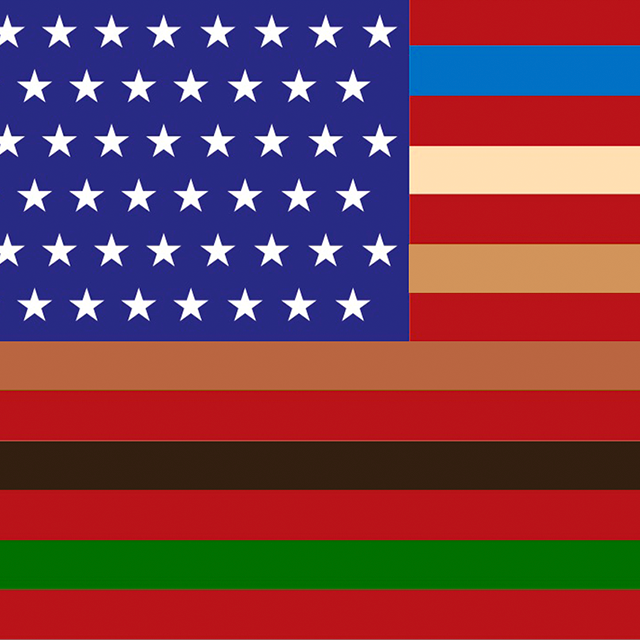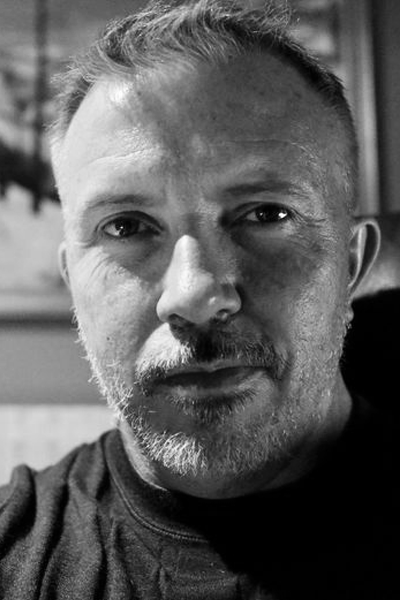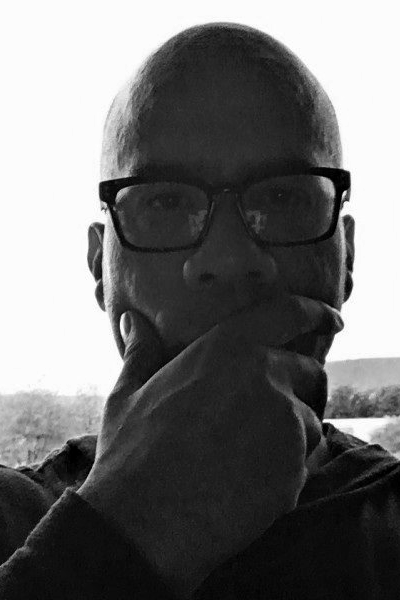The American Age has one objective:
Re-ignite zeal for the American idea. Not by provoking nostalgia for what has been, but by inspiring hope for what might be, The American Age takes up the cause of those visionaries who have come before us.
The American possibility does not belong to the West, but to all peoples who have sacrificed for self-determination, and who believe that the rights of the individual are at least as important as the rights of the group. Yes, there have been shameful epochs in American history, and, yes, there will be more. Yet no other community so far imagined has greater potential to manifest the virtues of equality, fraternity, and liberty. And if this is not the American Age, if it has already past, then we would not let it go gently. We would fight so that its most authentic ideation may yet manifest, so that it might be remembered for what it could have been, instead of for what it failed at most bitterly.
African slavery, the conscription of East Asian laborers, the theft of indigenous lands and the murder of indigenous peoples, the bleaching of history and our deeply felt denial that we are responsible for any of it, all of these must be confronted. But we would not stall in the breach created by this inquiry; we would push beyond the static antagonisms of unexamined group affiliations and strive for a reconciliation with our past. A historical reckoning is only the beginning of our project.
We would revive wisdom as a viable subject of rigorous intellectual inquiry. We would champion virtue. We would take up speculations about God, and destiny, and hope, and strip them of their facile denominational associations. We would cast aside the adolescent binaries—the donkeys and elephants, the believers and nones, the whites and non-whites—and agitate for a more humble and nuanced understanding of what it means to live amongst a vast network of strangers whom we must learn to trust, even though we will never come to know them. We would recall, over and over again, what it is to be a human being aware of our own mortality, aware of our own limitations and fears, aware of our own animal desires.
The American Age is unapologetically secular, even as it defends the value of religion. The American Age promotes truth and objectivity, even though it understands truth and objectivity are elusive and wild, and only ever momentarily won. The American Age knows that writing and talking have their place, but so too does action, and that “pedestrian” concerns about status, property, and tradition are concerns all the same, and that we have a responsibility to take those concerns seriously, and to help our brothers and sisters address those concerns.
For thousands of years human beings have struggled, and fought, and labored in pain. There is no place to stand outside of that history. No tribe is innocent. No community above reproach. And there is finally no future in which these messy, unruly bodies stop colliding with and loving other bodies. There is no utopian future, no City of God, no Nirvana “this side of blue.” The world is on fire with competing wants and antagonistic desires. The American Age is an opportunity to embrace that world honestly and help shape its future.
We will never make the world right, but we won’t retreat from our responsibility to try. We hope you’ll join us.
Our Mission
Poets, philosophers, historians, devotees of the musae, no matter what grammar you don, we call you to arms.
Though scientists, industrialists, and well-meaning social engineers have secured life and liberty for a greater number of Americans than at any time in our history, we are failing to flourish as a people.
America’s imagination has enervated because we have failed to dream “America.” Its ambitions have languished because we have failed to speak for “America.” Its men lurch from adolescence to predatory entitlement because we have failed to discipline “America.”
“America” doesn’t belong to colonialists, capitalists, or slavers. America doesn’t belong to Donald Trump, or Oprah Winfrey, or Barack Obama, or Taylor Swift. America belongs to us. It belongs to you.
It is our responsibility to do something with it.
If we leave its imagining of the world to those intellectuals who have given up on the ideas of life, liberty, and the possibility of human flourishing, then the country will continue to fecklessly unspool. And if we leave its imagining to those who are evangelical about their own entitlement to history’s bounty, then our polity will surely curdle into tyranny.
It is our belief that the humanities should not drift too far from the concerns of the people who make humanistic inquiry possible. We should not forget to serve the people who clean the offices, fix the faucets, answer the phones, and process the financial requests. Not only the subaltern, but the working and burgher classes must be included in our imagined communities.
As a publication, The American Age dispassionately contextualizes the United States within the broader sweep of human social evolution by drawing on the latest research in anthropology and sociology. It also uses those insights to agitate for positive cultural and intellectual changes within and without American academic and political institutions.
This is not a place for utopianism, or regressive social Darwinism.
We hope to revive the critical concision and relevance of our best intellectual forebears by producing something that is light on jargon, big on existential concerns, and pragmatically engaged in improving people’s lives.
This is a place of intellectually honest, historically conscientious hope.

The American Age Flag
Symbols are alive or they’re dead; when they no longer serve their purpose they must change

Why does the American flag look like this?
George Washington hoisted the first American flag above the Continental Army’s base at Prospect Hill in January 1776. Since then the flag has undergone many iterations, but it is generally agreed that the red represents resilience and valor, the white represents purity and innocence, the blue represents vigilance, perseverance, and justice, and the stars represent the states of the union.
As you can see, our flag is different.
We believe in the American idea that all men and women are equal before the law and enjoy rights that are intrinsic and inalienable. We also believe, along with Thomas Jefferson, that because men and women are imperfect, and their wisdom is limited and fleeting, that this idea must be renewed periodically in order to remain vital.
We have revived our flag accordingly.
Red still represents resilience and valor.
Blue still represents vigilance, perseverance, and justice.
The stars, however, are fifty-one. Not for Puerto Rico, the most common reason to show a flag with fifty-one stars, but to help us stay mindful of the future. We add an extra star to our flag to remind ourselves of the unfinished nature of the American experiment.
There is no white on our flag. America has never been pure nor innocent. We have done terrible things to native peoples and foreign nationals across multiple continents for hundreds of years.
Purity is the byword of fanatics. Innocence the breeding ground for cynicism and tyranny. We would not have a flag that symbolizes these things. No human community has ever been pure, no human community innocent. America can atone for its past by committing to principles that transcend politics and territory.
Each white stripe on our flag has been transformed to represent the terrestrial nature of our project. The light blue and the green at the top and bottom represent the earth, out of which we are born and to which we will return.
The varieties of brown between, from light to dark, recall the varieties of people who call America home, who dream of calling America their home, and who have fought, died, and yearned to create their own version of “America.”
Masthead

C. Travis Webb
Editor

Seph Rodney
Contributing Editor

Steven Fullwood
Contributing Editor

Seth Perry
Contributor

James Bielo
Contributor

Christopher Ebmeier
Production Engineer
Our Contributors

C. Travis Webb
Editor
C. Travis Webb, PhD is a former Associate Editor for the Journal of the American Academy of Religion and Claremont National Scholar. His academic and popular writing has been published by Oxford University Press, Huffington Post, Patch, The Abeng, Jeffers Studies, and several other outlets you’ve likely never heard of.
He’s been working on a book for a (really) long time, and publishes his own views on his Substack Useless Wild. He is a small business owner, a panentheist, a pragmatist, a science hobbyist, and a bunch of other interpersonal things that are way more important to him than they probably are to you.

Steven G. Fullwood
Contributing Editor
Steven G. Fullwood was born on January 15, 1966. He is an author, filmmaker, podcaster, and curator who may best be known as the archivist who founded the In the Life Archive at the Schomburg Center for Research in Black Culture, part of the New York Public Library.

Seph Rodney
Contributing Editor
Seph Rodney, PhD, is a staff writer and editor for the online art magazine Hyperallergic and has written for CNN, American Craft magazine, and Artillery magazine. He created a radio show in London called The Thread, broadcast on Resonance FM from 2008 to 2011. His book The Personalization of the Museum Visit is out on Routledge press. It explores the ways in which the experience of attending an art museum has changed in the last generation. Seph was born in Jamaica and lives in the South Bronx.
The Moral Imagination
Our moral judgments are often reflexive and feel to us as familiar and intimate as our sense of taste and smell. But to share a moral vision with millions of other people is a tremendous work of the imagination. The Moral Imagination is an exploration of the ideas and events that shape this collective sense of right and wrong.
What are the contours of this imagination? How might we strengthen it? What ideas will help us thrive as a species in the 21st century and beyond?
Join us as we explore, provoke, and become inspired by those who are imagining a better world.

